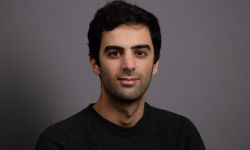It’s no wonder that Twitter has caught on with journalists. For news and gossip junkies, the micro-blogging site is the perfect fix. While blogs were once dismissed by the press as a place for boring geeks or ranters in their dressing gowns, Twitter has proved irresistible to journalists.
Twitter came of age as a major news source in May 2011 when it scooped the conventional media by revealing Osama Bin Laden had been killed in a raid in Pakistan.
An IT consultant, living in Abbottabad, tweeted details of the US-led operation as it happened. Sohaib Athar wrote that a helicopter was hovering overhead shortly before the assault began and said it might not be a Pakistani aircraft.
White House communications director Dan Pfeiffer had notified the world via Twitter that President Obama would be making a major announcement. But Keith Urbahn, former US Defense Secretary Donald Rumsfeld's chief of staff, tweeted ahead of Obama’s press conference: “So I’m told by a reputable person they have killed Osama Bin Laden. Hot damn.”
The likelihood is that many first heard of the resignation of the Pope, the birth of Prince George and the deaths of Margaret Thatcher and Nelson Mandela on Twitter. Now it is the leading place for breaking news and used by print journalists to put up scoops, make contacts, promote their titles and crowd source stories.
Ex-Guardian journalist Emily Bell, director of the Tow Center for Digital Journalism at Columbia's Graduate School of Journalism, told the International Journalism Festival last year: "Twitter is the most significant invention for journalism since the telephone".
A vital news source
Twitter has established itself as a vital news source for print journalists with tweets by showbiz celebrities, politicians and footballers all making good copy. Take this intro from a Times football match report:
Liverpool 5 Norwich City 1
Perhaps, in the end, the best summary of Luis Suárez’s beautiful, brutal destruction of Norwich City came from the unlikely source of Anthony Pilkington. Liverpool’s maddening, majestic striker had just scored the third of four goals he conjured during a performance described by Brendan Rodgers as one of “sheer brilliance” when the Ireland defender, a bewitched spectator rather than a stunned participant after being ruled out through injury, could take it no more. He took to Twitter in his dismay. “I wish that Luis Suárez would just leave us alone,” he wrote.
How would the sports pages of our national newspapers cope without Twitter quotes from the likes of Wayne Rooney and Joey Barton? Even the European Space Agency’s Rosetta space probe has a Twitter account (@ESA Rosetta). Liz Hurley tweeting she has not had an affair with President Clinton is an easy splash for the tabloids.
Editors active too
It’s not just reporters that find Twitter a vital tool for stories, editors are using it to promote their papers and give an insight into their editorial operations.
I don’t live in Darlington, but I’ve got a good idea of what’s happening in the town by following Northern Echo editor Peter Barron (@EchoPeterBarron) on Twitter. He uses Twitter with great humour and draws you into the world of a regional newspaper editor. Barron tweets what’s going to be in the paper the next day; takes you through the options and pictures he is considering for the front page; promotes readers’ offers, such as free fish n’ chips; and tells you when he’ll be speaking to a local group or singing in a musical.
Barron, who has more than 8,000 followers, also uses Twitter for an entertaining headline completion competition in association with BBC Tees. For example: “Middlesbrough woman finds an egg shaped like an alien's head - UNIDENTIFIED FRYING OBJECT”.
In January last year, Barron used Twitter to help design a front page on the threat of Darlington Football Cub - "The Quakers" - being forced to close after 128 years.
The front page, based around a graphic of a ref’s whistle, was shown for comments on Twitter while it was being designed. Barron said: "The interaction from followers has been remarkable and new followers have joined during the process. Some comments have influenced the look of the page, with suggested changes and ideas being taken on board.”
Barron also post’s the next day’s Northern Echo news bills on Twitter but believes it has replaced them. “I drive around the northeast part of England where we circulate the newspaper, and I see bills outside that are out of date, not very interesting. I question how many of those are actually selling newspapers. Twitter is the new billboard for the modern era,” he told the International News Media Association.
Tony Gallagher (@gallaghereditor), who made a shock departure from the editorship of the Daily Telegraph in January, has nearly 19,000 followers on Twitter which he used to promote his paper by giving an outline of the splash; a preview of Matt Prichard’s cartoon; or highlighting the latest Peter Oborne column. He was also quick to have an acerbic pop at the opposition on Twitter, for example tweeting: “Does @pollytoynbee ever tire of writing the same one-note column every week?”
In a sign of the times, Gallagher took to Twitter after his departure to comment on the reaction to his leaving the Telegraph. According to Gallagher, while there were no commiserations from Number 10 there were “lovely letters” from Vince Cable and Ed Miliband.
Get your numbers up
Editorial consultant Peter Sands, of Sands Media Services, says: “Twitter is just a highly effective way of talking directly and immediately to your audience. Editors can use it to inform people of breaking news, tease them to buy the paper, seek information and to become a personality in their daily lives. The key, particularly for local and regional editors, is to build up followers who are readers and potential readers. People are more likely to follow a person than an institution - so you have to give a bit of yourself.”
When Sands was working with Northcliffe, he told editors who had not got more than 1,000 followers on Twitter, they weren’t trying. He remembers that Paul Wiltshire, deputy editor at the Bath Chronicle, had around 700. Wiltshire responded by regularly putting out snippets about his early morning trip to work and other whimsy and now has more than 2,300 followers.
Guardian editor-in-chief Alan Rusbridger (@arusbridger) was an early adopter of Twitter and has nearly 125,000 followers. Giving the Andrew Olle lecture 2010 in Sydney, he said of Twitter: “It's a highly effective way of spreading ideas, information and content. Don't be distracted by the 140-character limit. A lot of the best tweets are links. It's instantaneous. Its reach can be immensely far and wide.”
Twitter had a huge impact during the London riots in August 2011 when there was a mass of misinformation on social media. The answer was to turn to those reporters from local and national titles who were trusted who were using Twitter to cover the fast moving events.
Paul Lewis, who covered the riots for the Guardian, said: "The first portal for communicating what we saw was Twitter. It enabled us to deliver real-time reports from the scene, but more importantly enabled other users of Twitter to provide constant feedback and directions to trouble spots. While journalists covering previous riots would chase ambulances to find the frontline, we followed what people on social media told us. By the end of the week, I had accumulated 35,000 new Twitter followers."
Route one
Another advantage of Twitter for reporters is that it can help penetrate the PR wall that surrounds the famous. When Virgin boss Richard Branson visited Plymouth and was reunited with his former boat the Virgin Atlantic Challenger II, local journalist Scott Grenney asked him a question via Twitter: “What was it like taking to the wheel of her again? Also what do you think of the Plymouth waterfront?” Branson replied: “It was wonderful – Plymouth is also just beautiful.”
That simple tweet made a page one story in the Plymouth Herald and was carried on the paper’s website crediting Scott, who runs a local website and social media network for the Plymouth Barbican area.
Twitter also expands the way a daily newspaper can use breaking news. For example, the Oxford Mail (@TheOxfordMail) used Twitter to give updates on the February floods with links to a special floods blog and videos.
Newspaper groups and their newly appointed social media editors are developing strategies to get all their titles and journalists to use Twitter and drive traffic to their websites. Most journalists seem to accept if they have a fast breaking story, there is no point in holding back for a print edition when they know they can be first on Twitter.
As Rusbridger says: “The life expectancy of much exclusive information can now be measured in minutes, if not in seconds. That has profound implications for our economic model, never mind the journalism.”
The Telegraph’s Ben Brogan has commented: “Where journalists used to meet in the bar, they now exchange gags and gossip on Twitter.”
There are still sceptics. Sunday Times columnist Dominic Lawson refuses to join Twitter despite being told it would help him “establish a brand” outside the confines of a newspaper.
He claims: “My stock answer - increasingly derided by them as newspaper columnist after newspaper columnist joined in the electronic shouting match - has been that a single spontaneous comment seeming highly amusing for about one second could mark the author down for all eternity as a monster or a maniac.”
Certainly, there is a danger that a journalist, especially a news reporter, can reveal too much of their own views on Twitter and may no longer be seen as impartial. But I suspect Lawson is in a minority.
All journalists like to be first with the news and welcome the chance to enhance their print title and their own reputation on Twitter. Recent high profile legal cases have made journalists aware they have to be as mindful of the libel laws on Twitter as they would be in print.
The success of Twitter in attracting so many print journalists is perhaps best illustrated by a comment from former Daily Express news editor Philippa Kennedy. A well-known columnist told her they refused to go on Twitter. She fired back: “Who are the Beatles?”
Recent research findings
Nearly three-fifths of Twitter's 15 million UK users follow at least one national newspaper brand or journalist and are twice as likely to tweet as those who don't, according to new research published in March.
The research, NewsOnTheTweet, carried out by Newsworks, the marketing body for national newspapers, shows the close relationship between Twitter users and newspapers.
It reveals that 59% of Twitter users follow at least one UK national newspaper brand or national newspaper journalist.
Just under half (49%) follow at least one national newspaper journalist. Some high-profile journalists have more followers than main newspaper brands.
The Daily Telegraph's football correspondent, Henry Winter, has 652,000 followers, more than the 427,000 people who follow the main Telegraph account.
Likewise, The Times columnist Caitlin Moran's 490,000 followers on Twitter is nearly three times the 172,000 people who follow The Times.
According to the survey, those who follow national newspaper brands on Twitter are more active on the site than those that don't, are 60% more likely to visit the site daily and twice as likely (109%) to tweet daily.
The Newsworks chief executive, Rufus Olins, said Twitter had a "special relationship" with newspapers. "We are immersed in news," he said. "We want to be the first to know and also be guided by expert insight and interpretation. The combination of news brands and Twitter helps keep us informed and opinionated. The insights from this study show that Twitter and news brands are most definitely stronger together."
The research involved 1,200 UK Twitter users.












